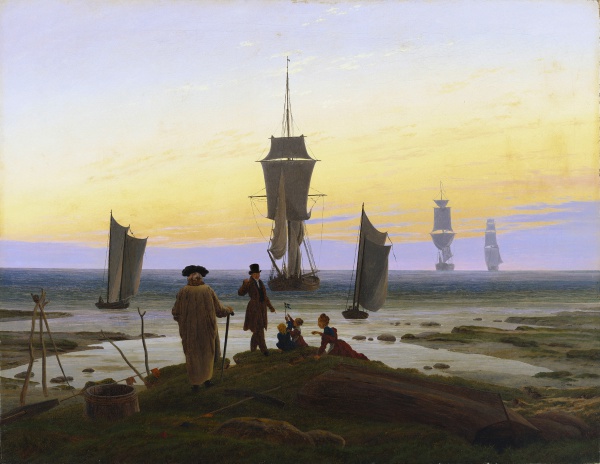Facts About The Stages of Life
"The Stages of Life" is an allegorical oil painting from 1835 by Caspar David Friedrich, a renowned German Romantic landscape artist. Created shortly before his death, this artwork explores themes of mortality and the transient nature of existence.
Set on a tranquil seashore, the painting depicts an elderly man walking towards two adults and two children standing on a hill overlooking a harbor. This scene symbolically represents the various stages of human life and our inevitable journey toward death.
Many believe the figures represent Friedrich and his family, with the artist himself portrayed as the elderly man. The backdrop is a familiar one—Utkiek, near Friedrich's birthplace in Greifswald, Germany. In the harbor, five ships mirror the five figures on land, each representing different stages of life.
The central ship is often seen as representing the mother, while the smaller boats symbolize the children embarking on their life journeys. The ship furthest on the horizon signifies the elderly man's voyage into the unknown, possibly symbolizing the end of life. Some critics interpret the ships as embodying the parents acquiring wisdom and experience, with the old man representing a life nearing its conclusion.
Adding a historical touch, Friedrich's children hold a Swedish pennant, nodding to the town's history under Swedish rule. Interestingly, Friedrich named his son after the Swedish king Gustav IV Adolf. The painting's title, "The Stages of Life" was likely given posthumously, as Friedrich preferred his works to be interpreted visually rather than through descriptive titles.

 Czech Republic
Czech Republic